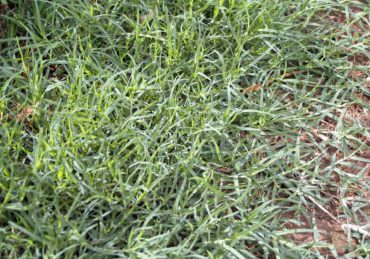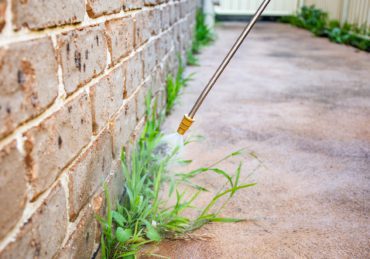Planting grass seed in Michigan at the right time is crucial for achieving a healthy lawn. The best time to plant grass seed in Michigan is from mid-August to mid-September, as the soil temperatures range between 50-65°F, which supports optimal seed germination. Late summer or early fall provides ideal conditions for grass to flourish, ensuring strong root development before winter arrives.
Alternatively, cool-season grasses such as Kentucky bluegrass, perennial ryegrass, and tall fescue can be planted in late spring, from mid-May to mid-June. However, spring planting presents challenges such as increased competition from weeds and the need for diligent irrigation. Spring seeding demands consistent moisture and careful monitoring to prevent soil from drying out too quickly, which can hinder seed germination and establishment. Choosing high-quality grass seed mixtures will improve the chances of successful lawn establishment.
Selecting a premium grass seed mixture, such as those developed by experts like Jonathan Green, ensures a thicker, greener lawn that thrives year-round. Ever since the early days of turfgrass cultivation, proper timing and preparation have been key to growing lush, healthy lawns.
Easily hire the best lawn & landscape pros working in your neighborhood.
Best Time to Plant Grass Seed in Michigan
Fall is the best time to plant grass seed in Michigan, specifically from mid-August to mid-September. During this period, cooler air temperatures and biologically active soil create favorable conditions for grass seedlings to establish themselves before the colder months arrive. The combination of warm days and cool nights ensures that seed germination occurs quickly and effectively.
Early October is still an option for planting, but later planting may lead to slower germination due to dropping temperatures. Seeding after mid-September increases the risk of grass seed failing to establish before winter dormancy sets in. Spring seeding, while possible, is often more difficult due to soil compaction, competition from weeds, and the presence of insects and diseases that can weaken young grass seedlings. Preparing the soil properly by loosening compacted areas and adding organic soil enhancers will help improve lawn health and encourage strong root development.
Why Late Summer and Early Fall is Ideal
Although several factors influence the success of grass seed planting, late summer and early fall stand out as the most favorable seasons in Michigan. This period, specifically from August 15 to September 15, offers soil temperatures ranging from 50-65°F and air temperatures between 60-75°F, which are perfect for seed germination.
The combination of warm days and cool nights during this time helps seeds sprout while minimizing competition from weeds. Reduced competition allows grass seedlings to absorb nutrients more efficiently, leading to stronger establishment.
Additionally, planting in late summer and early fall provides more time for root development before winter dormancy. Compared to spring planting, which often faces weed invasion and requires more maintenance, fall seeding offers a longer establishment period with fewer challenges.
Applying fertilizer from early September to November further enhances nutrient availability, supporting grass growth and preparing lawns for the next growing season.
Spring Seeding: A Viable Alternative?
While late summer and early fall are the best times for planting grass seed in Michigan, spring seeding is a secondary option when done correctly.
Ideal from late April to June 15, spring seeding allows for the establishment of cool-season grasses like Kentucky bluegrass and perennial ryegrass. However, soil temperatures must be between 50°F and 65°F to promote successful germination.
One of the biggest challenges of spring seeding is increased competition from weeds, which thrive in the warming temperatures. Frequent irrigation is necessary to maintain adequate soil moisture, especially as spring conditions can lead to dry spells that hinder seedling establishment.
Despite these challenges, spring seeding can be effective with diligent care. However, grass seeded in the spring often takes longer to establish compared to fall planting, leading to higher maintenance requirements.
When to Overseed in Michigan for a Thicker Lawn
Overseeding is essential for maintaining a dense, resilient lawn. The best time to overseed in Michigan is from mid-August to mid-September when conditions are optimal for seed germination and lawn establishment. Overseeding at this time ensures that new grass has time to take root before winter dormancy.
Overseeding helps fill in bare patches, thicken existing grass, and introduce resilient grass varieties suited for Michigan’s climate. Keeping the soil moist after overseeding is critical to encourage germination and root development. Applying a starter fertilizer and organic soil enhancers, such as “Love Your Soil,” can improve soil structure and nutrient availability, ensuring strong growth.
Steps to Successfully Overseed Your Lawn
Overseeding your lawn can greatly enhance its thickness and overall health, especially in Michigan’s climate. The ideal timeframe for overseeding is from mid-August to mid-September, when cooler temperatures and autumn moisture foster perfect conditions for seed germination.
Begin by mowing your lawn to a height of 2-3 inches to improve seed-to-soil contact, which is fundamental for successful seedling establishment.
Next, aerate the soil to enhance seed placement and facilitate absorption of water and nutrients, promoting robust grass growth. Select high-quality cool-season grass seeds, such as Kentucky bluegrass and perennial ryegrass, which thrive in Michigan’s environment. Distribute the seeds evenly across the aerated lawn, guaranteeing adequate coverage.
Following overseeding, it is essential to maintain consistent moisture in the soil. Frequent light watering is critical for encouraging seed germination and establishing new grass shoots.
As the seedlings emerge, continue to monitor moisture levels, gradually shifting to deeper watering sessions as the grass matures. By following these steps, you can guarantee a thicker, healthier lawn that can withstand Michigan’s seasonal challenges.
Easily hire the best lawn & landscape pros working in your neighborhood.
Preparing Your Lawn for Planting Grass Seed
Before planting grass seed, soil preparation is crucial for long-term success. Soil compaction and pH imbalances can hinder growth, making aeration and soil testing essential steps. Aeration improves drainage, enhances root penetration, and ensures that nutrients reach deep into the soil.
Checking Soil Conditions and Temperature
How can you assure your lawn is ready for grass seed planting? The first step is to check the soil conditions and temperatures, which are essential for germination success. In Michigan, the ideal soil temperatures for grass seed range from 50°F to 65°F. Monitoring these temperatures will help you determine the best time to sow your seeds, typically from mid-August to mid-September.
In addition to temperature, conducting a soil test is important to assess pH and nutrient levels. Proper soil conditions must be established for peak grass growth; amendments such as lime or fertilizer may be necessary based on your test results.
Additionally, verify that the soil is well-drained and free of debris, as this promotes healthy root penetration. Tilling the area to a depth of 4-6 inches enhances seed-to-soil contact, which is crucial for germination.
Lastly, maintaining a loose and crumbly soil texture is significant. Compacted soil can impede grass growth; thus, aerating your lawn prior to planting will facilitate better root development and guarantee a thriving lawn.
Addressing Soil Compaction and pH Levels
While ensuring your lawn is ready for grass seed planting, addressing soil compaction and pH levels is vital for successful establishment. Soil compaction can severely hinder grass growth and root development, making it essential to aerate the soil prior to planting. Aeration improves soil structure, allowing for better water infiltration and root penetration.
Conducting a soil test is an essential step in this process, as it helps determine the pH levels of your soil. For ideal nutrient absorption, a pH of 6.0 to 7.0 is perfect for most grass types in Michigan. If the pH is outside this range, regular soil amendments—like liming to raise pH or adding sulfur to lower it—should be implemented based on test recommendations.
In addition to aeration, incorporating organic matter, such as well-rotted compost, enhances drainage, aeration, and nutrient retention. Tilling the soil to a depth of 4-6 inches is also recommended to alleviate compaction and create a suitable seedbed.
Choosing the Right Grass Seed for Michigan
Choosing the right grass seed is essential for establishing a healthy lawn in Michigan’s unique climate.
Cool-season grass varieties such as Kentucky bluegrass, perennial ryegrass, tall fescue, and fine fescue each offer distinct advantages that cater to various lawn needs.
When selecting a grass seed mixture, it’s important to take into account factors like germination rates, drought resistance, and maintenance requirements to guarantee ideal growth and resilience.
Easily hire the best lawn & landscape pros working in your neighborhood.
Cool-Season Grass Varieties
Choosing the right grass seed is essential for establishing a thriving lawn in Michigan’s unique climate. The state’s weather conditions favor cool-season grasses, which flourish during the spring and fall when soil temperatures range between 50-65°F.
Among the most popular options is Kentucky bluegrass, prized for its lush appearance and self-repairing qualities. However, it requires at least four fertilizer applications annually to maintain ideal health.
Perennial ryegrass is another excellent choice, known for its rapid germination, making it perfect for quick patches or overseeding. While it performs best in grass seed mixtures, it can enhance the overall vigor of the lawn.
For those seeking low-maintenance options, tall fescue is recommended due to its drought tolerance and adaptability to varying moisture levels. Conversely, fine fescue is best suited for shady areas, providing a resilient solution for less sunny spots.
Utilizing grass seed mixtures that combine these varieties can greatly improve lawn resilience and adaptability, ensuring a healthier landscape throughout Michigan’s diverse environmental conditions.
Factors to Consider When Selecting a Grass Seed Mixture
When considering the establishment of a healthy lawn in Michigan, various factors play a crucial role in determining the most suitable grass seed mixture. The region’s climate favors cool-season grasses, making Kentucky bluegrass, perennial ryegrass, and tall fescue excellent choices.
A well-thought-out grass seed mixture can enhance lawn resilience and overall quality; for instance, combining Kentucky bluegrass, which establishes slowly, with faster-germinating perennial ryegrass can provide quick coverage while the bluegrass matures.
Assess the intended use of your lawn carefully. High-traffic areas benefit from a mixture that includes tall fescue for its durability, whereas shaded regions may require fine fescue to thrive.
It’s important to evaluate seed purity and germination percentages on the seed label, ensuring the selection adapts well to Michigan’s soil and climate conditions.
Lastly, adhere to the recommended seeding rates—3-4 lbs per 1,000 sq. ft for a Kentucky bluegrass/perennial ryegrass mix is ideal for establishment.
Expert Tips for Successful Grass Growth in Michigan
Achieving successful grass growth in Michigan requires attention to common seeding mistakes and the right fertilization techniques.
Proper soil preparation and the use of soil enhancers can greatly strengthen root systems, ensuring resilience against the state’s diverse climate challenges.
Avoiding Common Lawn Seeding Mistakes
Successfully establishing a lush lawn in Michigan requires careful attention to common seeding mistakes that can hinder grass growth. One key error is improper timing; for ideal results, plant grass seed in Michigan during late summer to early fall when soil temperatures are perfect for germination.
Furthermore, conducting a soil test before planting is essential to determine pH and nutrient levels, enabling necessary amendments that support a healthy lawn.
Another common mistake is over-seeding or under-seeding. Use high-quality seed blends at the recommended rate, such as 3-4 lbs per 1,000 sq. ft for Kentucky bluegrass or perennial ryegrass.
When seeding, avoid burying the seeds too deeply; lightly rake them into the soil, leaving about 10% visible to enhance germination.
Lastly, proper watering techniques are imperative. Water frequently and lightly to keep the topsoil moist, but avoid over-saturation, which can cause seed rot and poor establishment.
Fertilization and Soil Enhancers for Strong Roots
Strong roots are fundamental to a thriving lawn, particularly in Michigan’s diverse climate. Proper fertilization is vital for promoting strong root development, especially when planting grass seed. Incorporating a well-balanced starter fertilizer with a nitrogen to phosphorus ratio of 1:1 or 1:1.5 during seeding can greatly enhance nutrient absorption in new grass seedlings.
Before planting, conducting a soil test is necessary to assess the nutrient status and pH of the soil. This information allows for targeted amendments, such as lime or sulfur, to optimize soil conditions for grass establishment.
A minimum 2-inch layer of well-rotted organic matter can also improve soil structure and enhance nutrient retention, fostering healthy grass growth.
Additionally, regularly applying soil enhancers like MAG-I-CAL can help balance soil pH, further enhancing nutrient availability and overall soil health.
After seeding, lightly covering the area with straw or clippings retains moisture and provides a protective barrier, aiding germination and preventing erosion.
Final Thoughts on Planting Grass Seed in Michigan
While the timing of planting grass seed in Michigan is vital for achieving ideal results, understanding the local climate and soil conditions can greatly enhance the success of your lawn.
The best time to plant grass is between mid-August and mid-September, when warm days and cool nights create perfect conditions for germination. During this period, soil temperatures ideally range from 50°F to 65°F, essential for cool-season grasses like Kentucky bluegrass and perennial ryegrass to thrive.
In addition to late summer seeding, late spring offers a secondary window for planting, particularly from mid-May to June 15. However, diligent irrigation is necessary during this time to combat potential weed invasions.
It’s important to avoid planting after mid-September, as decreasing soil temperatures and shorter daylight hours can hinder grass growth and establishment before winter.
Regularly monitoring local weather patterns will further guarantee favorable conditions for planting and seed growth.





